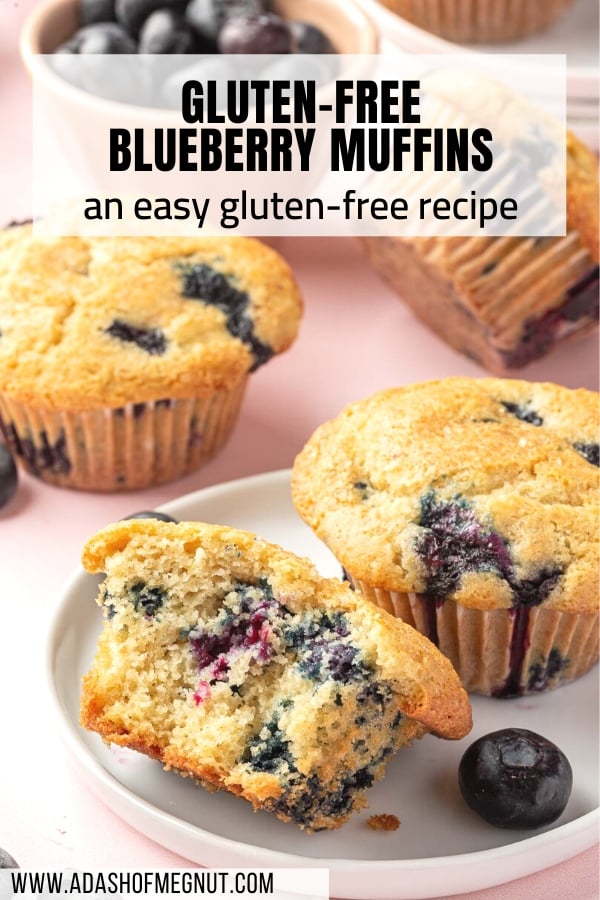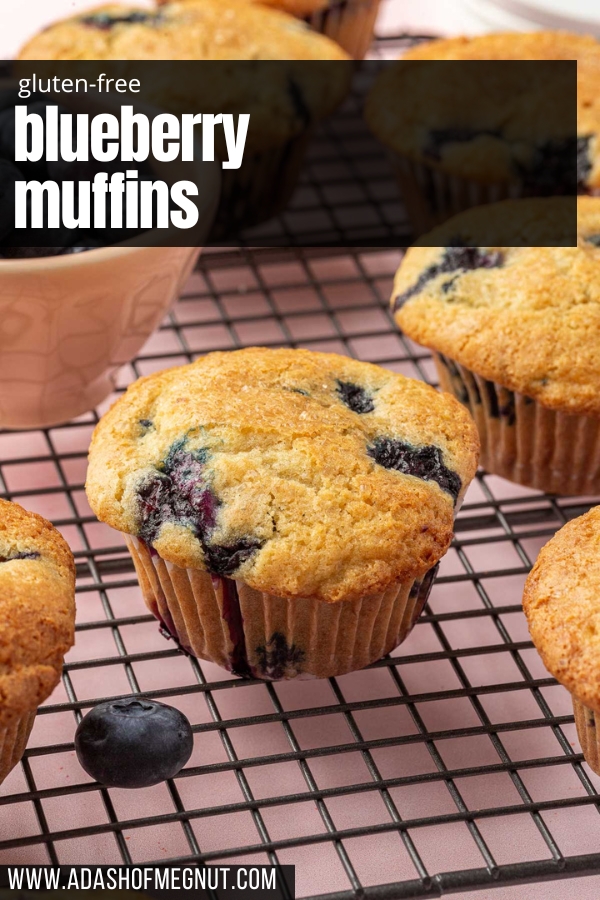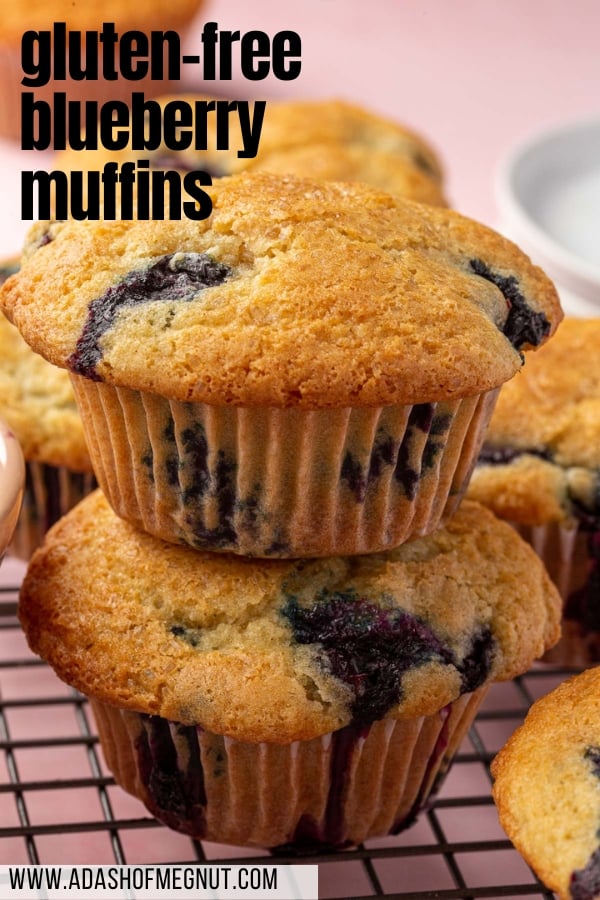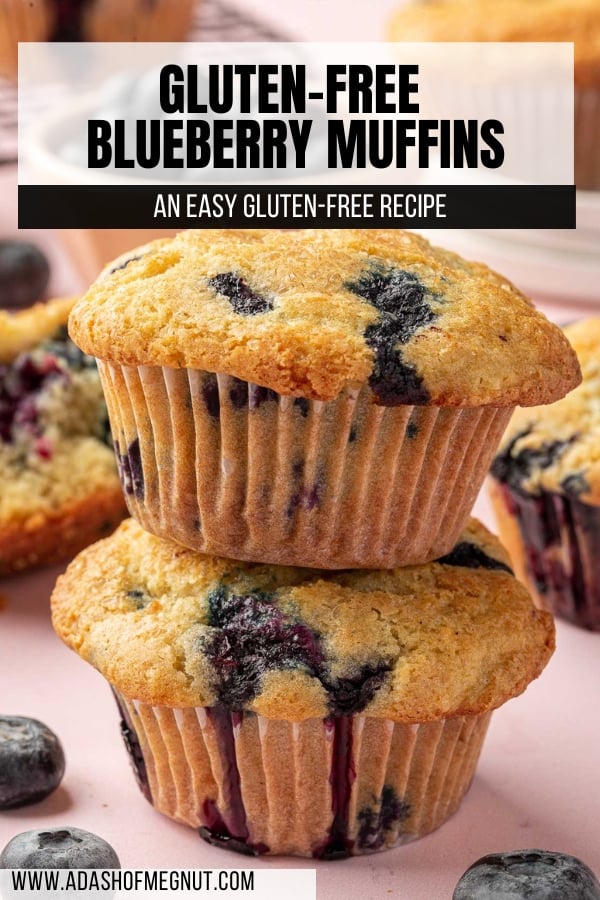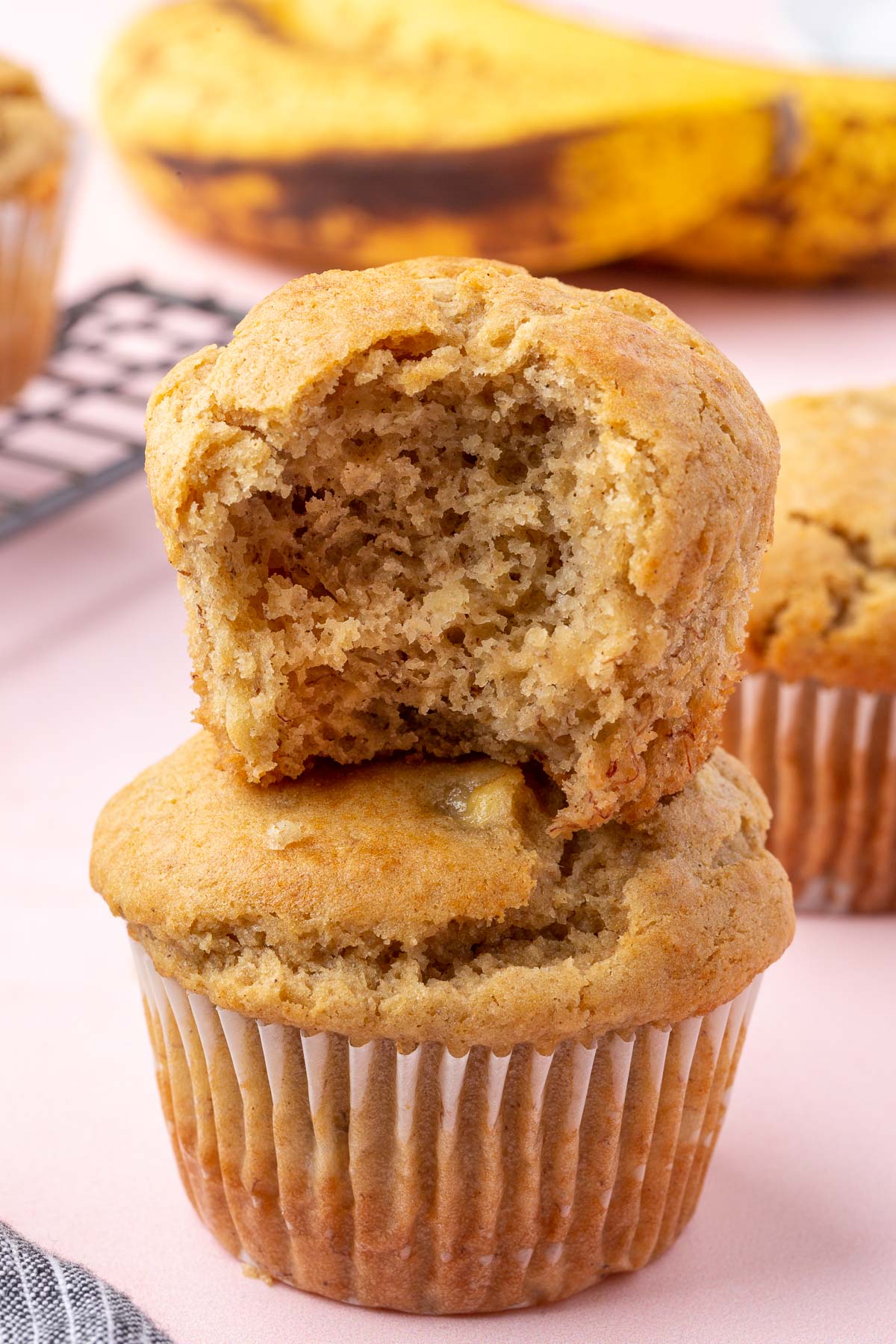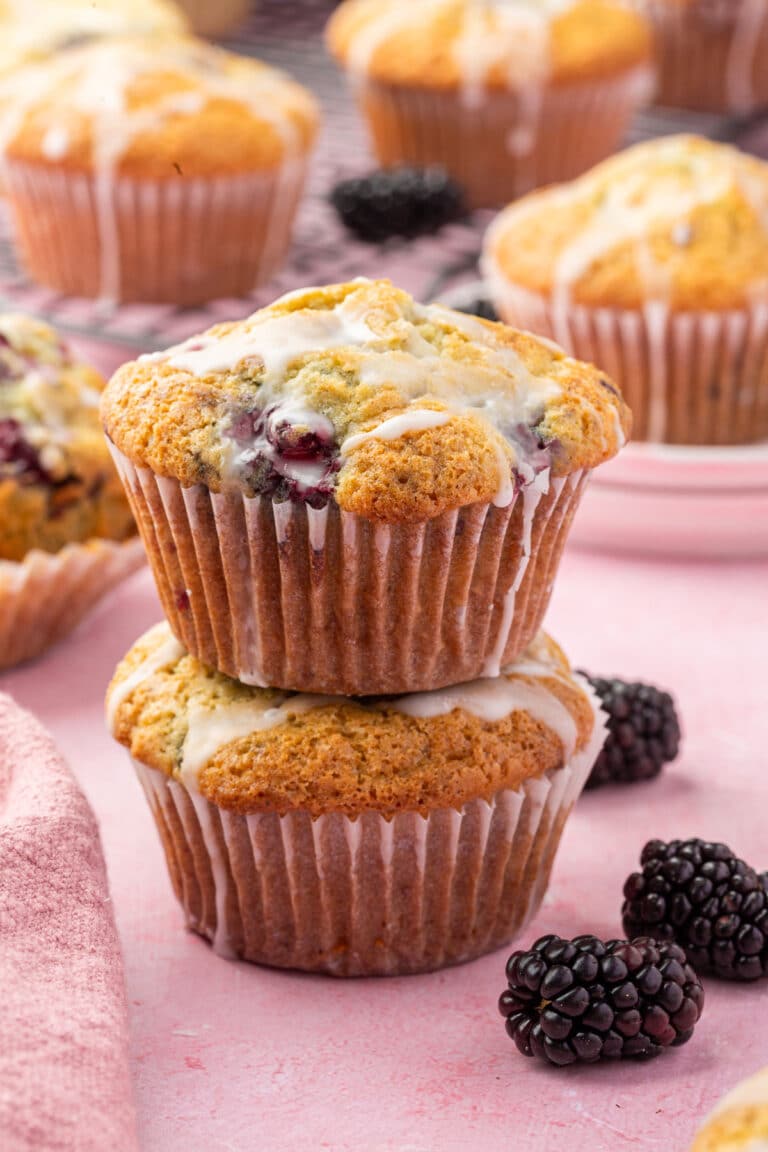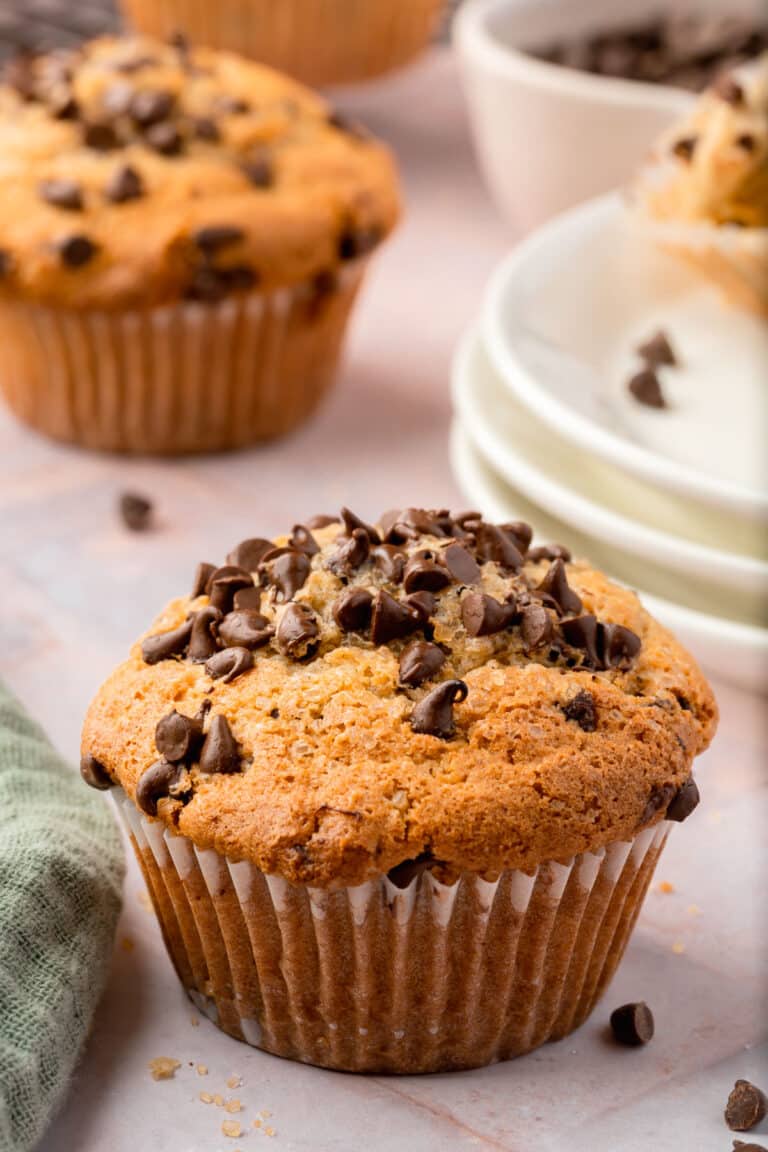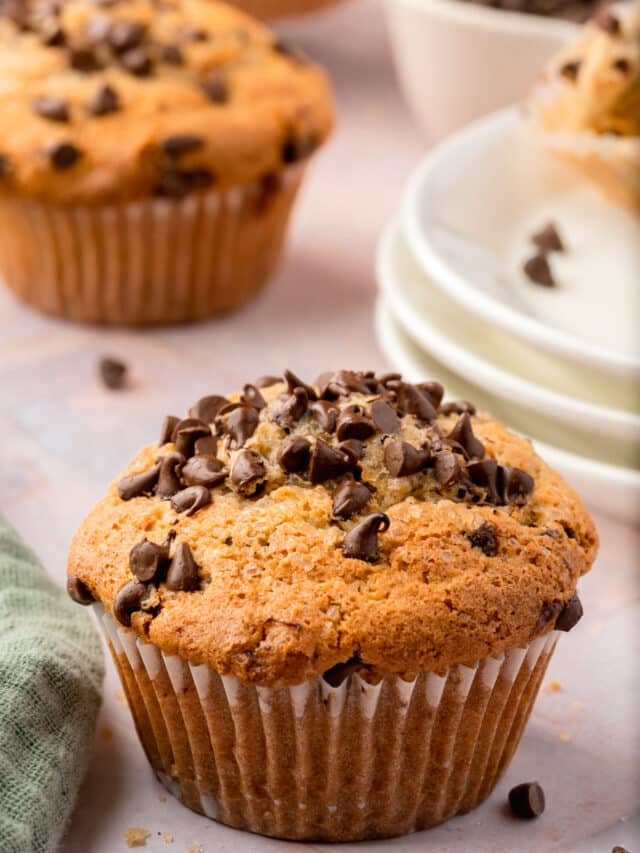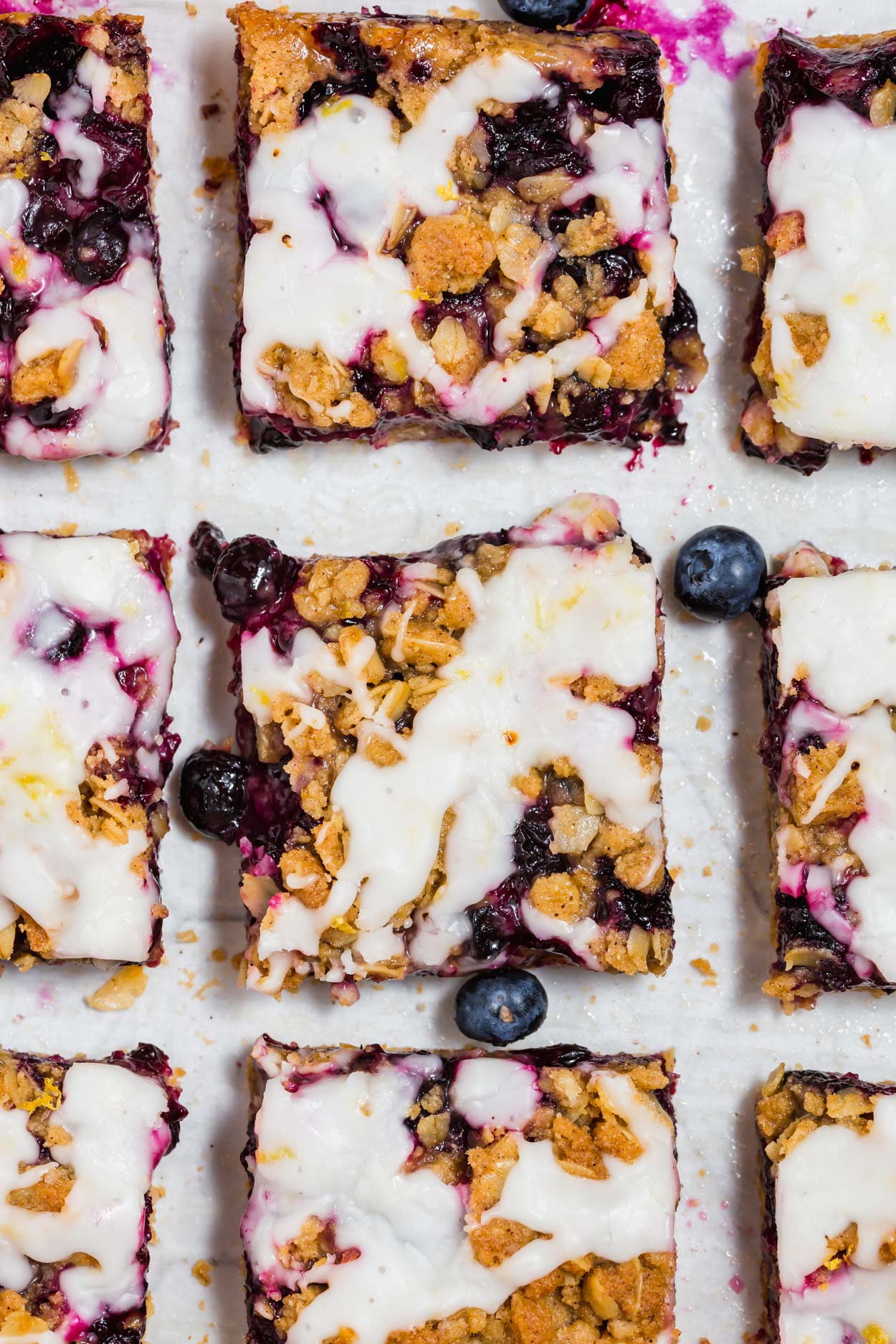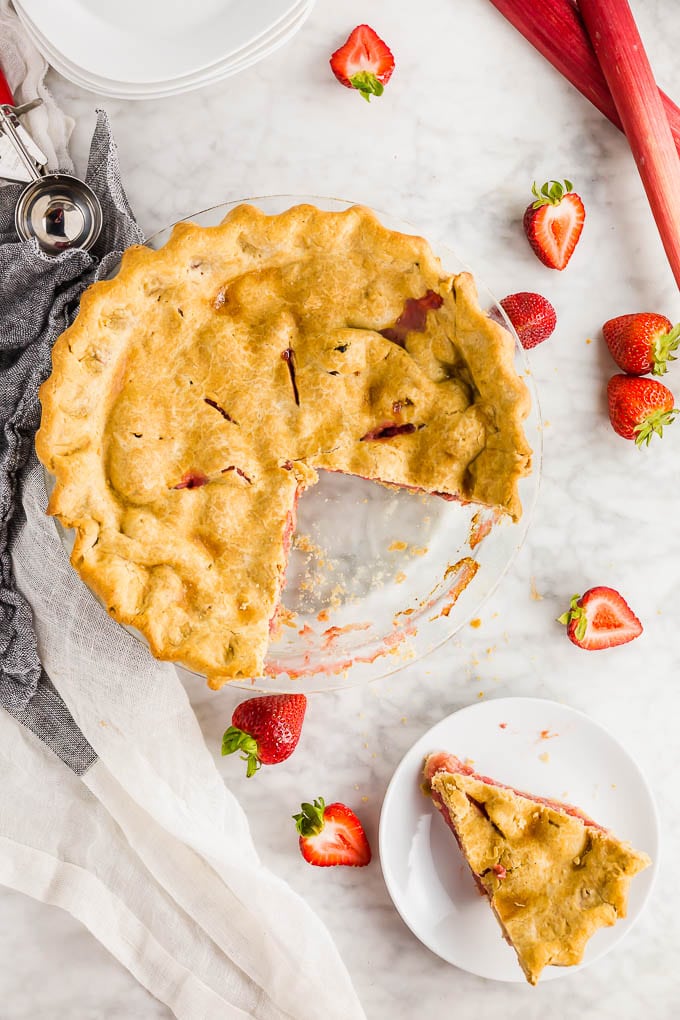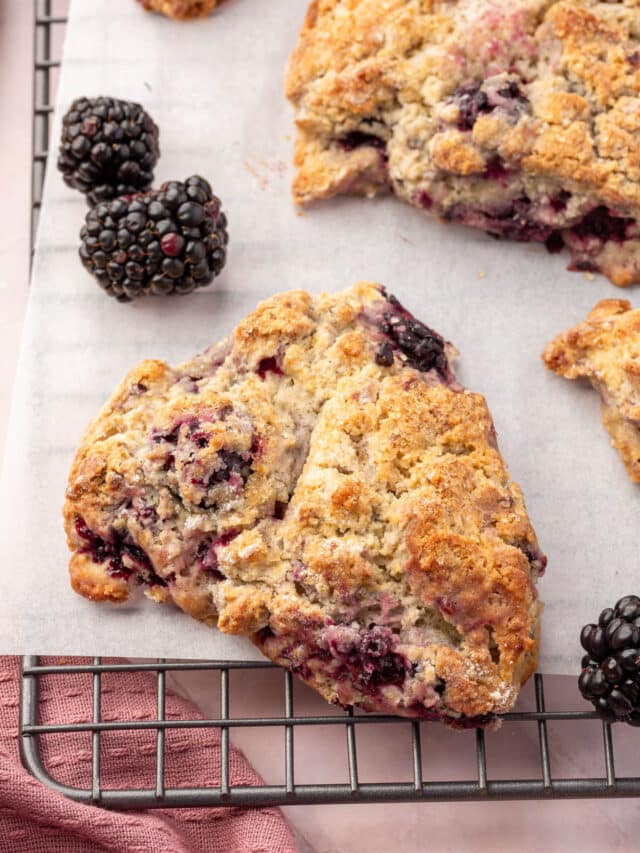Gluten-Free Blueberry Muffins
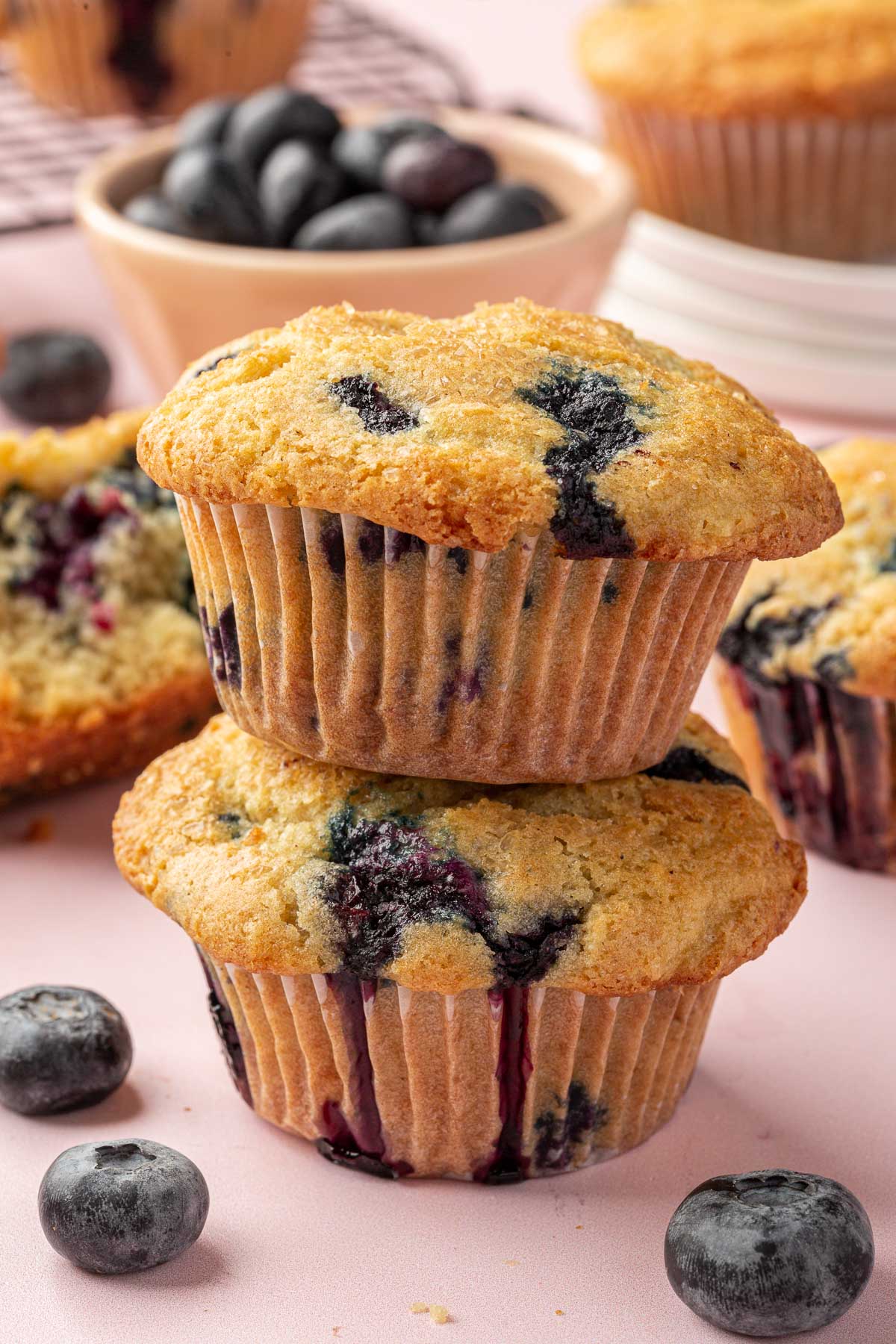

Table of Contents
Why this recipe works
These gluten-free blueberry muffins give you bakery-style muffins with a crunchy sugary top. These muffins are soft, with a tender crumb, and have loads of sweet, juicy blueberries throughout bursting in every bite.
What sets this gluten-free blueberry muffin recipe apart is the use of a high-temperature baking method to ensure that the muffins come out with a perfectly golden brown crust and a domed top. It’s sometimes hard to get the rise and height you want with gluten-free baked goods, so this recipe has been tested at different temperatures to figure out the temperature that will give you the best height and texture, without drying out the muffins.
Best of all? They’re on the table in under 30 minutes, making them a great treat for breakfast, brunch, or a grab-and-go snack.
Whether you’re a seasoned baker or new to gluten-free recipes, you’ll find this a straightforward blueberry muffin recipe with detailed step-by-step photos to guide you along the way.
You’ll love this recipe because:
Ingredients
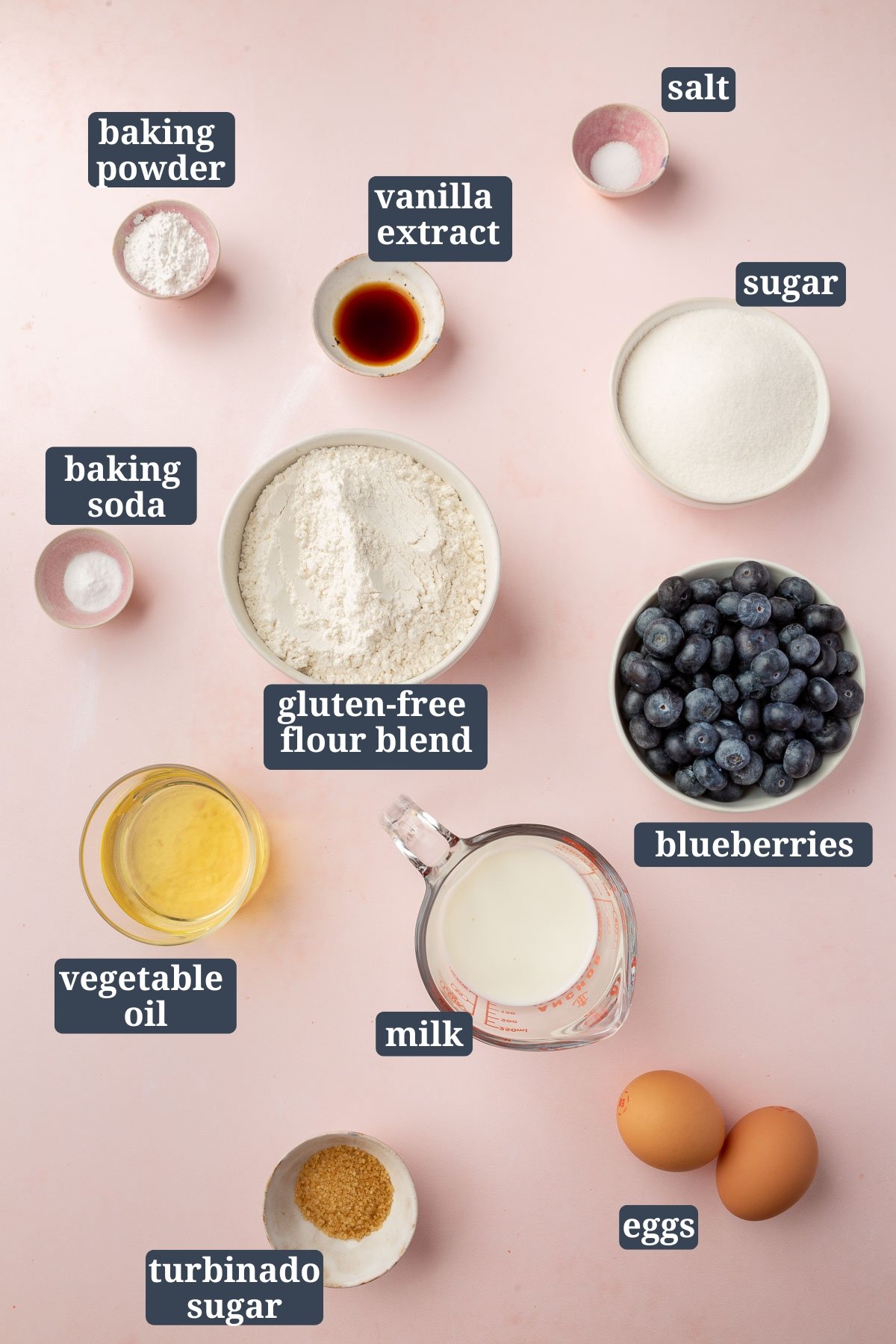
Ingredient Notes
- Blueberries – Choose fresh blueberries that are firm, plump, and have a uniform deep blue color. For muffins, I like to use smaller blueberries so that they are more evenly dispersed throughout the muffins. If using frozen blueberries, do not thaw them before adding to the batter to prevent bleeding.
- Gluten-Free Flour Blend – I use Bob’s Red Mill 1-to-1 Gluten-Free Baking Flour in the blue bag, which already contains xanthan gum. I have not tested this recipe with other gluten-free flour blends, so I cannot verify that they will work in this recipe.
- Granulated Sugar – Standard granulated sugar works best for this recipe. I don’t recommend reducing the amount of sugar in the recipe, because it will affect the browning and texture of the muffins.
- Baking Powder – Ensure your baking powder is fresh for proper rise. It loses potency over time, so if it’s older than six months, it may not work as effectively.
- Baking Soda – Like baking powder, freshness is key for baking soda. It should be replaced every six months for the best results.
- Salt – Regular table salt is what I used in this recipe.
- Milk – I prefer using whole milk for this recipe, but non-dairy milks like almond or gluten-free oat milk are good substitutes for a dairy-free option.
- Eggs – Use large eggs (50g each) at room temperature for the best incorporation into the batter.
- Vegetable Oil – Any neutral-flavored oil like canola or sunflower oil works well.
- Vanilla Extract – Pure vanilla extract is recommended for the best flavor. Avoid imitation vanilla as it can have a chemical aftertaste.
- Turbinado Sugar – This coarse sugar adds a nice crunch and texture to the muffin tops. If unavailable, you can use regular granulated sugar or skip it entirely. You can also put a gluten-free crumble topping on the muffins if you prefer. My gluten-free blackberry muffins also have a lemon glaze that would be lovely on top of these blueberry muffins.

To prevent your blueberries from sinking to the bottom of the muffins during baking, coat them in a tablespoon of gluten-free flour before adding them to the batter. This will help suspend the blueberries throughout the muffin, ensuring an even distribution of delicious blueberry flavor in every bite.
Step-by-Step instructions
Preparing these gluten-free blueberry muffins is so easy, and we’ve included step-by-step photos to guide you through the process. The below steps are not the full recipe, but meant to help you see the muffins made at various stages.
For the ingredient list with measurements, full instructions, printable recipe, and additional notes, please scroll down to the recipe card.
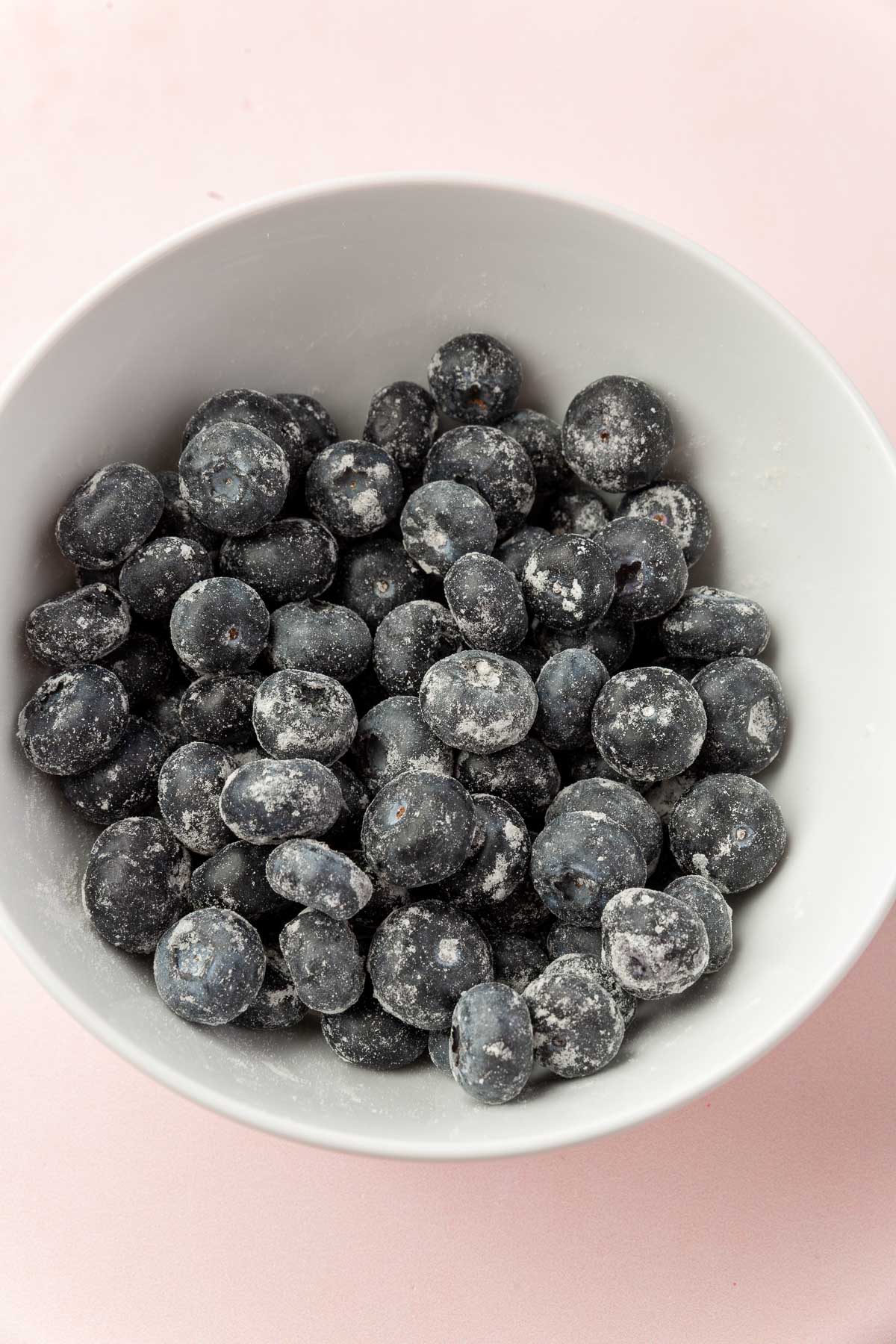
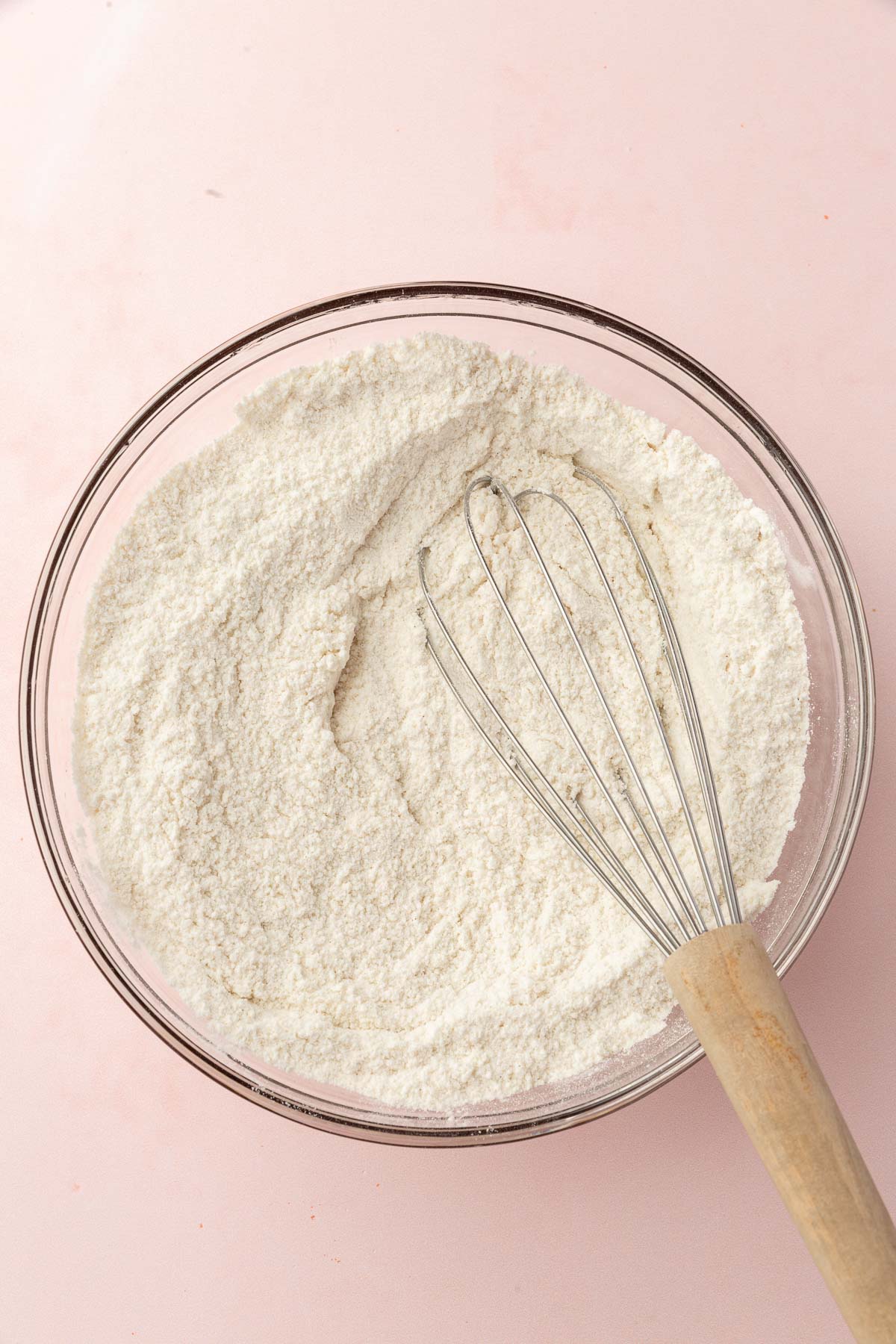
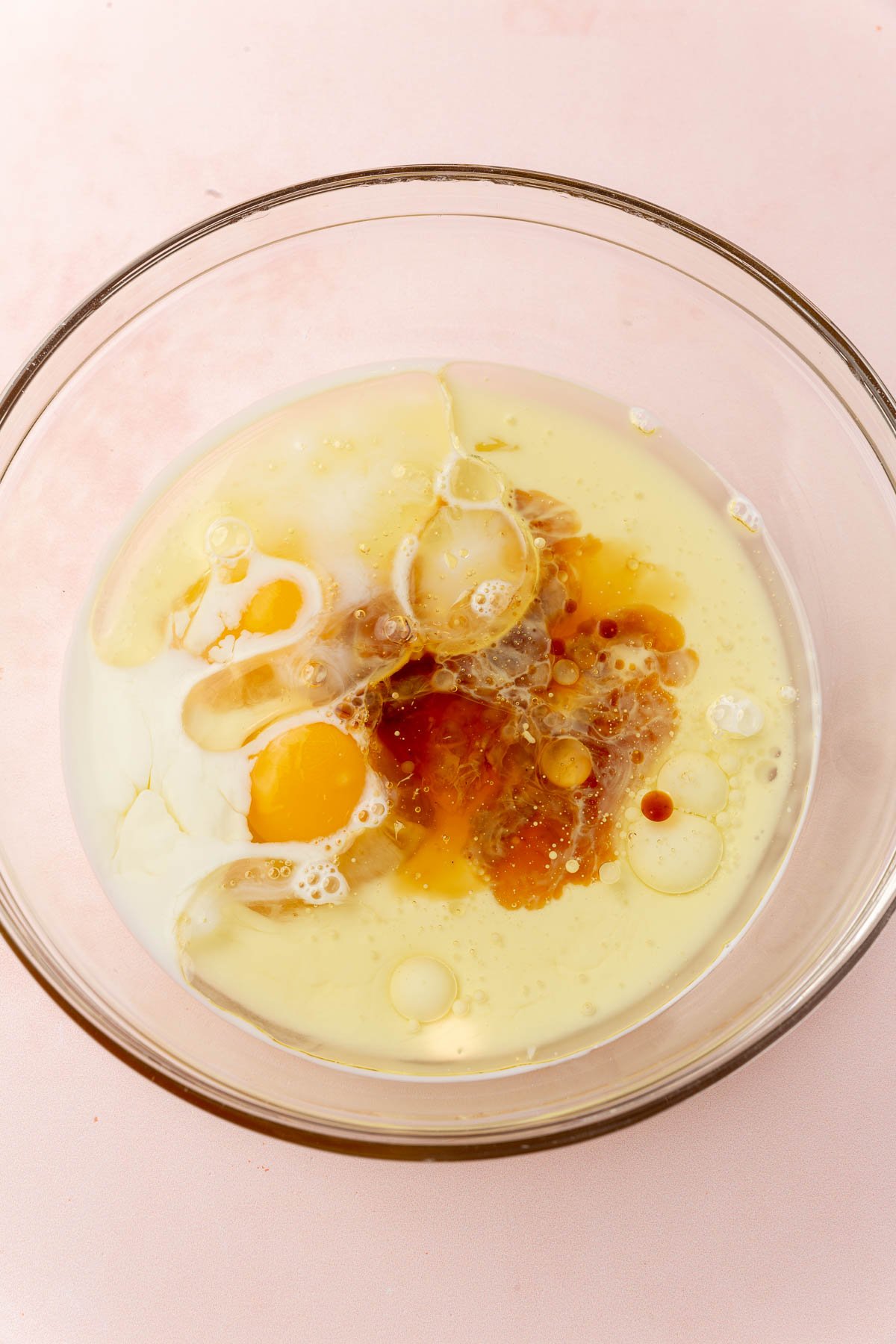
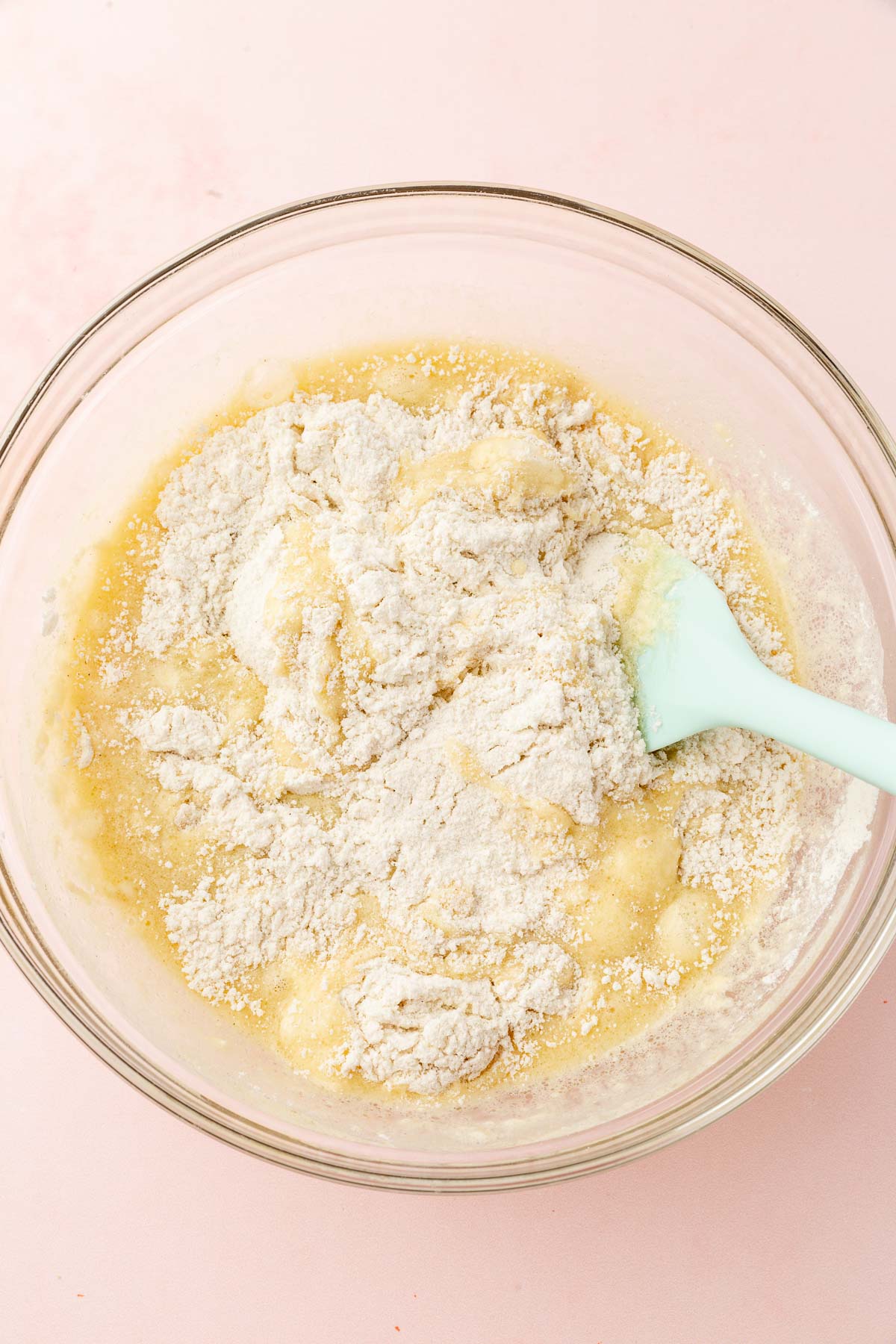
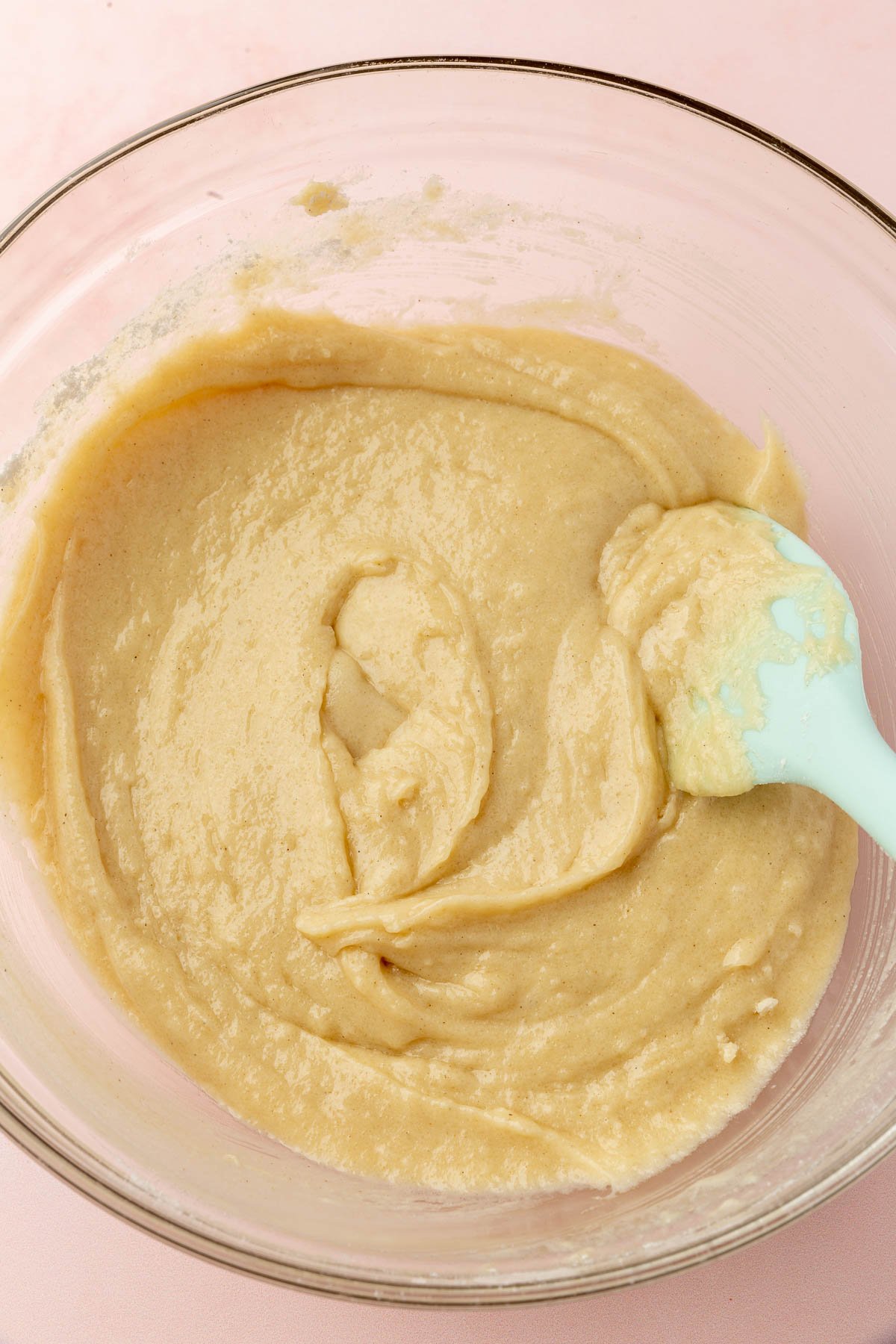
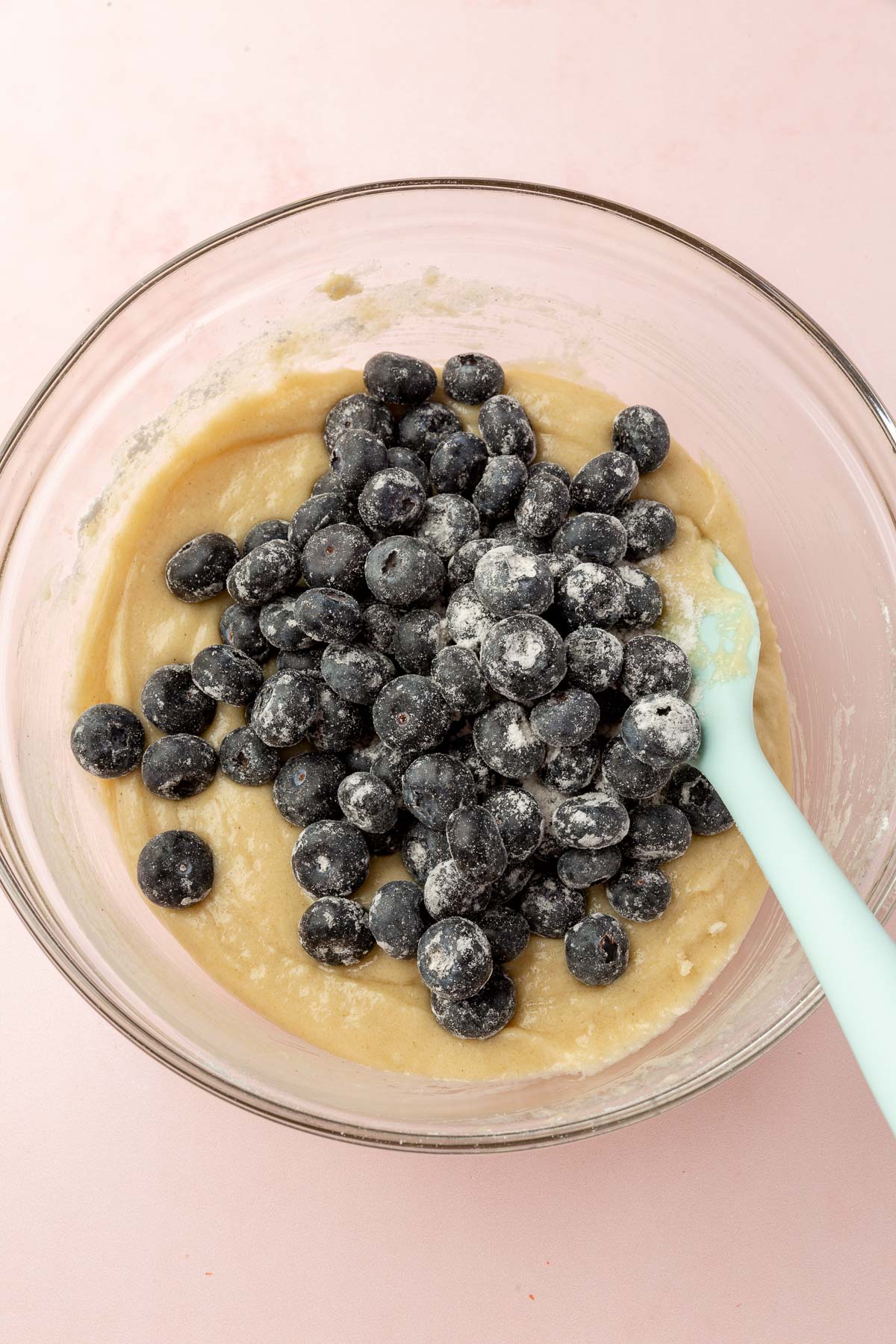
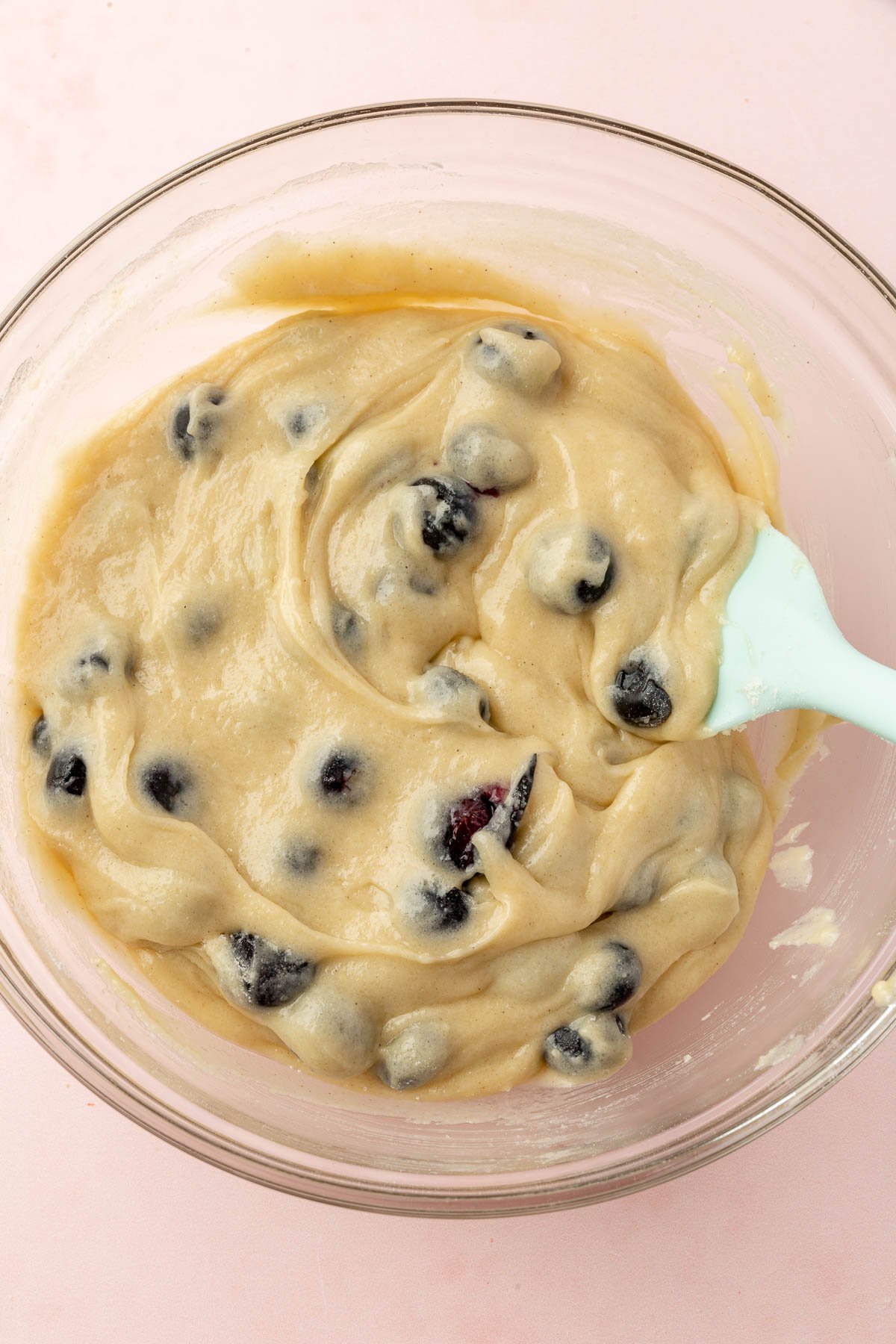
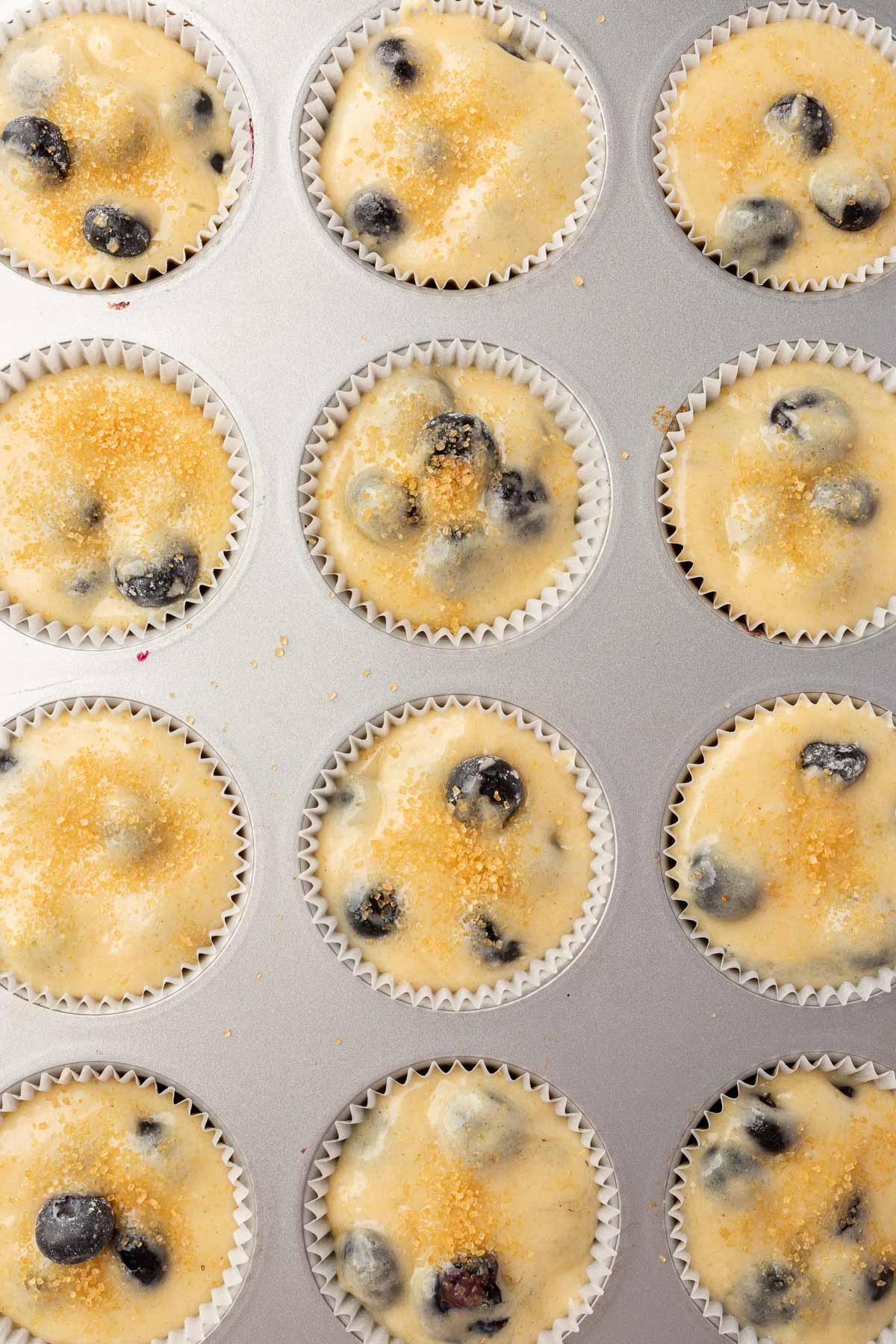
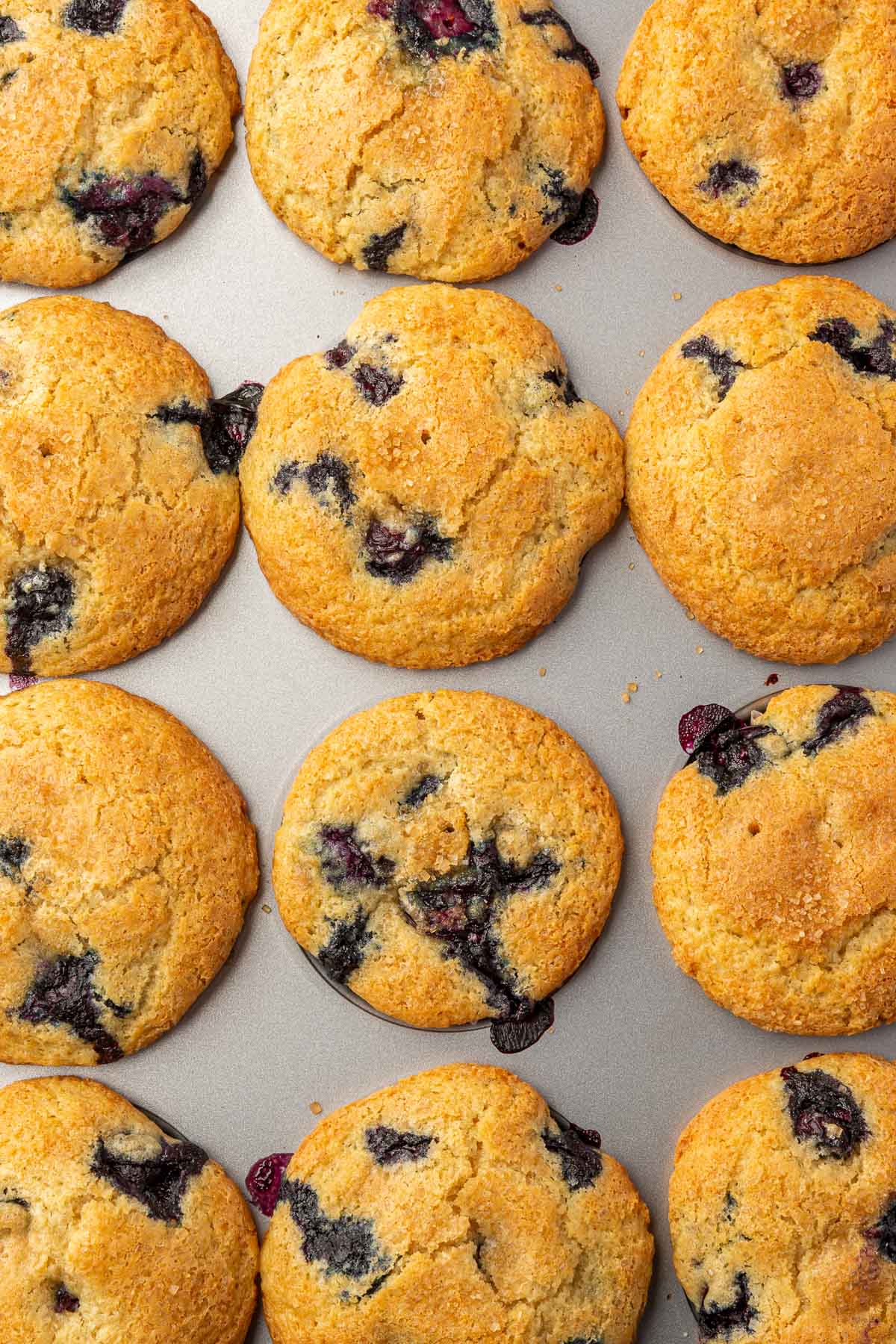
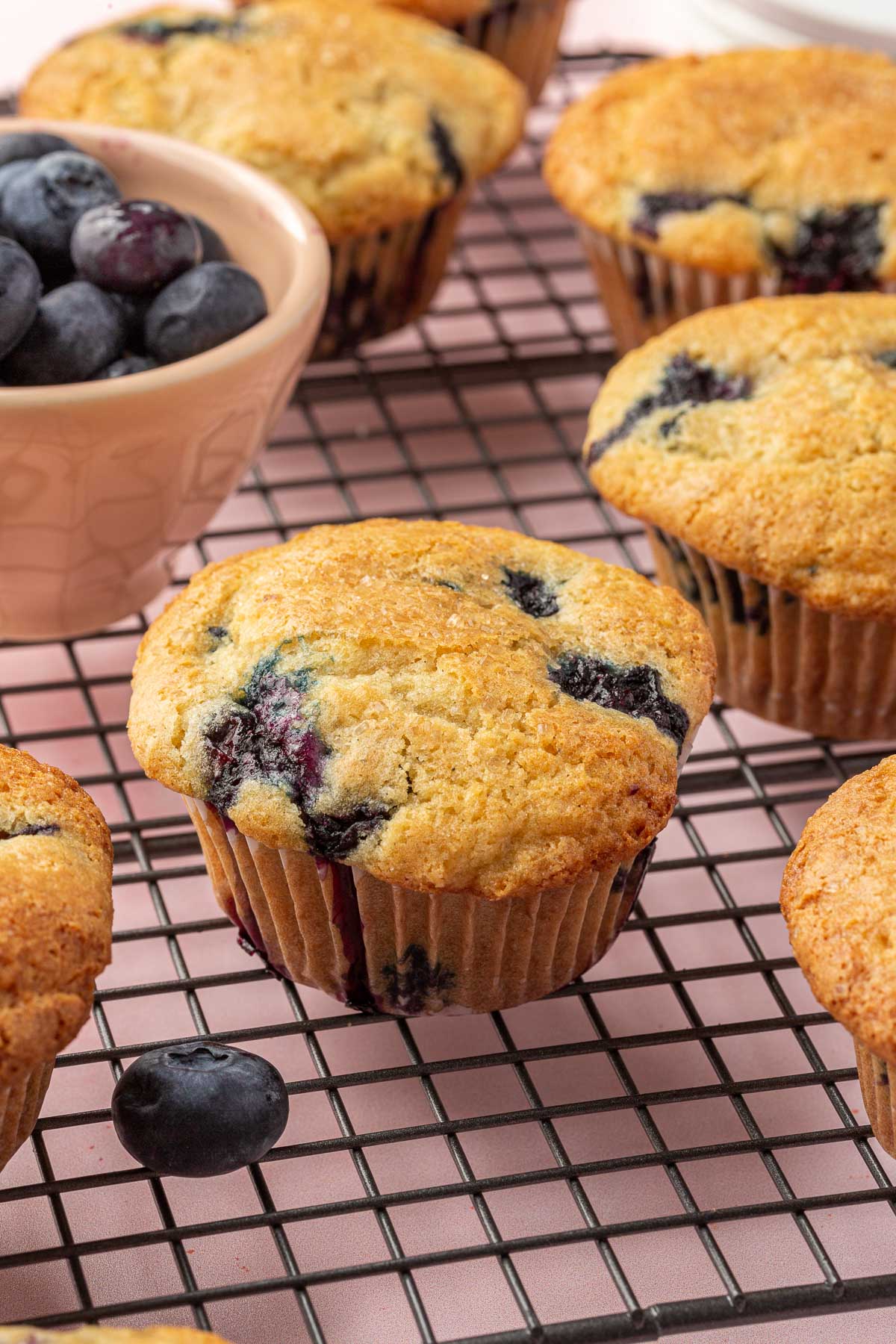
Recipe FAQs
Here are some frequently asked questions that readers have about my gluten-free blueberry muffins that will help you make them at at home!
I tested this recipe with Bob’s Red Mill 1-to-1 Gluten-Free Baking Flour (in the blue bag), which already contains xanthan gum.
You can use frozen blueberries if fresh blueberries are not available to you or out of season. Do not let the frozen blueberries thaw them before adding them to the batter. Thawed blueberries can release excess moisture, potentially making your muffins too wet and altering the texture.
I love the crunch that you get from the turbinado sugar, but you can omit it if you don’t have any on hand. I also think a gluten-free crumble topping would be delicious on top, too.
expert tips
Storage instructions
- Storage: To store your gluten-free blueberry muffins, place them in an airtight container or sealable plastic bag. They can be kept at room temperature for 2-3 days. For longer storage, consider refrigerating them for up to a week, but note that refrigeration may slightly alter their texture. For extended storage, freezing is recommended.
- Freezer Option: To freeze your muffins, individually wrap each muffin in plastic wrap or aluminum foil. Place the wrapped muffins in a resealable freezer bag or an airtight container. Frozen muffins can be stored in the freezer for several months without compromising taste or texture. This is my favorite way to store leftover muffins for an easy grab-and-go breakfast or snack.
- Reheat: To thaw frozen muffins, you can microwave them from frozen for 25-30 seconds until warm. You can also let them sit out at room temperature for about an hour until soft. If you want to warm your room temperature muffins, put them in the microwave for about 10 seconds just until warm.
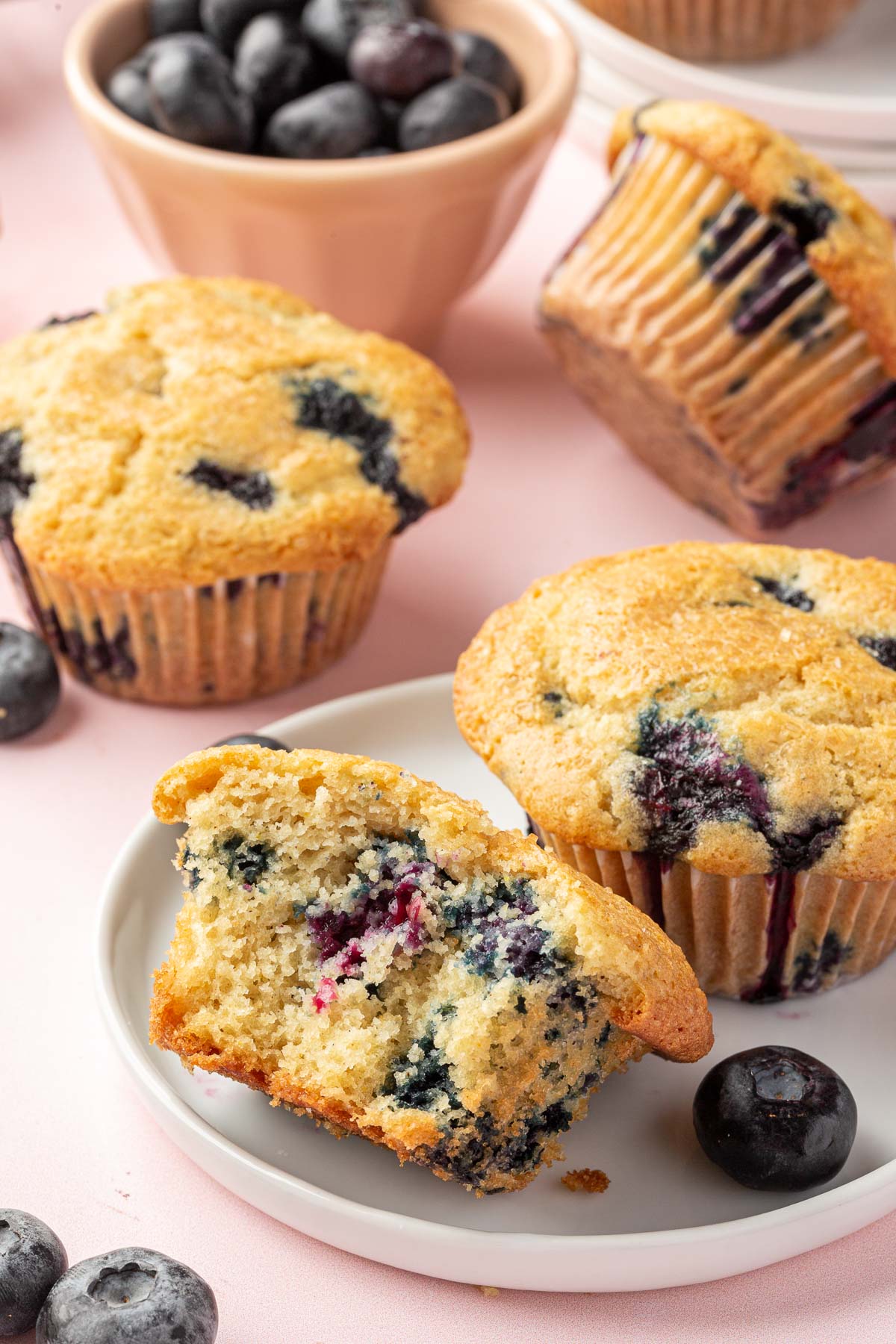
Serving suggestions
Blueberry muffins are always a welcome addition to any breakfast or brunch spread. To round out your meal, serve these muffins with my oven baked bacon and
More gluten-free muffins to try
Did you make this recipe?
I’d love to know! Please rate it and leave a comment below. You can also share your pictures and tag @adashofmegnut on Instagram.

Gluten-Free Blueberry Muffins
Ingredients
- 9 oz blueberries (250g, about 2 cups total)
- 2 cups gluten-free flour blend (280g, divided, I used Bob’s Red Mill 1-to-1 Gluten-Free Baking Flour, which already contains xanthan gum)
- 1 cup granulated sugar (200g)
- 1 tablespoon baking powder
- 1/2 teaspoon baking soda
- 1/2 teaspoon salt
- ½ cup milk (120g, 4 fl oz)
- 2 large eggs (100g)
- 1/2 cup vegetable oil (113g)
- 1/2 tablespoon vanilla extract
- 1 teaspoon turbinado sugar
Instructions
- Preheat the oven to 400°F (200°C). Line a 12 cup muffin tin with paper liners or grease with nonstick cooking spray. Set aside.
- Toss the blueberries in 1 tablespoon of gluten-free flour. Set aside.
- In a large bowl, whisk the remaining gluten-free flour blend, granulated sugar, baking powder, baking soda, and salt together. Set aside.
- In a medium mixing bowl, add together the milk, eggs, vegetable oil and vanilla extract. Whisk until smooth.
- Pour the wet ingredients into the dry ingredients. Mix until combined.
- Carefully fold in the blueberries, being sure not to overmix so that the batter does not get dyed with blueberry juices.
- Portion out the muffin batter into the prepared muffin tin using a cookie scoop or measuring cup. The muffin cups will be almost filled to the top. Sprinkle the tops with turbinado sugar.
- Bake at 400F for 15-17 minutes, until the muffins are browned and cooked through. The tops should spring back when you lightly press on them.
- Let the muffins cool for 5 minutes before removing from the muffin tin. Set on a wire rack to finish cooling.
- Serve and enjoy!
Notes
- This recipe uses Bob’s Red Mill 1-to-1 Gluten-Free Baking Flour, which already contains xanthan gum. I cannot verify that other brands of gluten-free flour will work in this recipe, as I have not tested them.
- If you have celiac disease or are on a gluten-free diet for any reason, be sure to double check that all of your ingredients is gluten-free.
- Accurate measurement of gluten-free flour is crucial. For best results, use a food scale and weigh the flour using the metric measurements provided in the recipe card. Different brands of flour will weigh different amounts for 1 cup, so weighing will always be more accurate. If you don’t have a food scale, spoon the flour into the measuring cup and level it off with a knife, rather than scooping directly from the bag, to avoid using too much.
- If using frozen blueberries, do not thaw them before adding to the batter, as they can bleed into the mix and change the color and consistency of the muffins.


